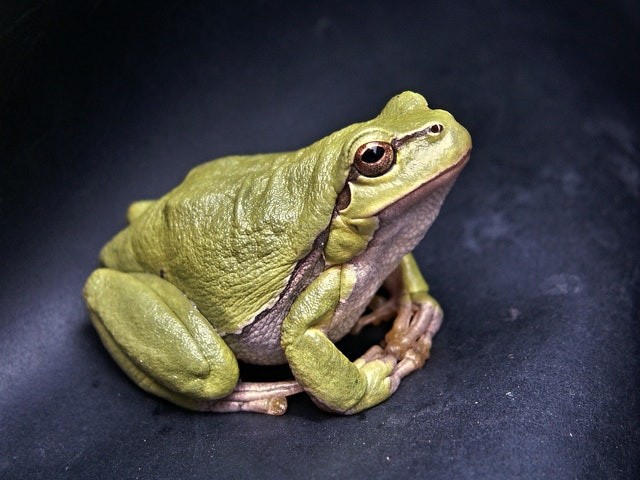A conservationist at the University of California has discovered that glass frogs (Sachatsmina Orejuela) living near roaring waterfalls can attract the opposite sex by waving hello to them.
Most frogs croak to gain the attention of a potential mate a characteristic that is common among frogs, but there are few species of frogs that are distinct. These frog species living near loud streams have additional means of communicating their opposite sex.

Because the noisy streams may obstruct their popular live songs, they use visual signs such as flapping their hands, waving their feet, or bobbing their heads. Some frogs who showcase their prowess near streams in the rainforest of Brazil, Ecuador, India, and Borneo have been documented.
ALSO READ - Leaves That Eat Tiny Frogs Found! Here's a Surprising Fact,Though
The frog (Sachatamia Orejuela)
Rebecca Brunner, a conservation ecologist undergoing a PPh.D. program at the University of California, Berkeley has found that glass frog (Sachatamia Orejuela) can be included in the list of frog species that use visual cues to replace their usual means of communication in a noisy environment. It was the first time the glass frog belonging to the Centrolenidae family was seen using visual communication to attract their potential mates.
Brenner said a few other species around the world use visual signaling in addition to high-pitched calls to communicate in predominantly loud environments. She added that the most interesting thing about these species of frogs is that they are not closely related to each other. That means the behaviors they developed over time evolved independently in response to environments that share the same noisy characteristics. This coincidental feature is called convergent evolution.
Sachatamia Orejuela is a unique species of frog that is native to the rainforests of Ecuador and Colombia. They are rarely found elsewhere but predominantly seen on rocks and boulders within the spray zones of waterfalls. The rushing water and slippery surfaces provide some form of protection against predators.

Mating Behavior of Glass Frogs (Sachatamia Orejuela)
Little or nothing is known about Sachatamia Orejuela species' mating and breeding behavior because they have green-grey color and semi-transparent skin that makes sighting them very difficult.
Brunner searched deep into the Ecuadorean rainforest stream to record the call of the Sachatamia Orejuela glass frogs. That was when she first noticed the visual signaling behaviors of glass frogs. At the scene, she saw the frog raising its front and back legs repeatedly. She quickly climbed a slippery rock, got herself well-positioned, and began to record the video footage of their mating behavior.
As she was recording, the frog continued to wave its hands and feet and bob its head. Simultaneously, she observed another male glass frog a few meters away performing the same actions.
Brunner said when she sighted the behavior, she was excited because she finally found a calling male after months of searching. Before this publication, there was no official documentation of this species' call.
This study, even though yet to be completed, reveals that Sachatamia Orejuela has an extremely high-pitched call, which helps it communicate above the lower-pitched white noise of waterfalls
RELATED ARTICLE - The New Master of Disguise: Peculiar Ancient Insect Becomes New Genus, Looks Like a Scrub Brush.
For more news,updates about frogs and similar stories, don't forget to follow Nature World News!
© 2026 NatureWorldNews.com All rights reserved. Do not reproduce without permission.





